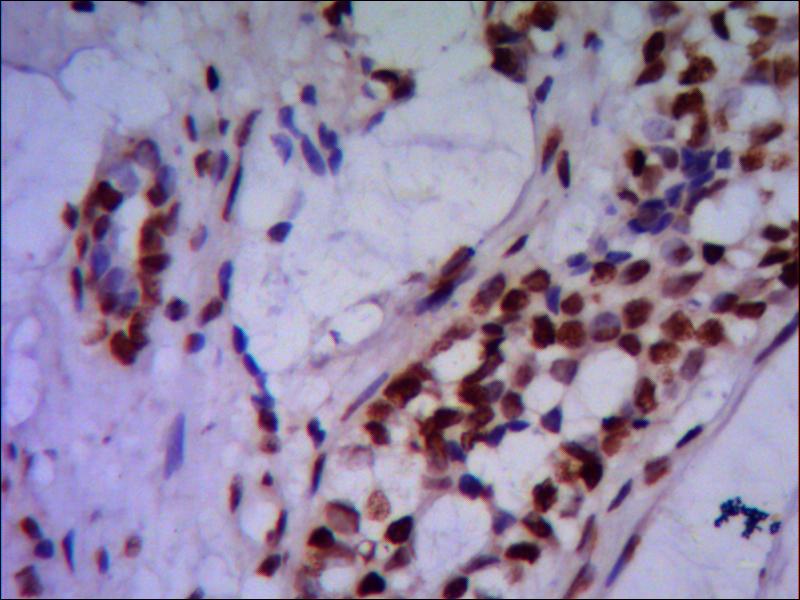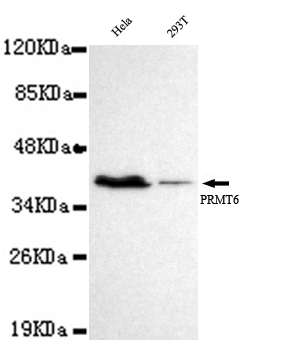-
Product Name
Anti-PRMT6 (2C3) Mouse antibody
- Documents
-
Description
PRMT6 (2C3) Mouse monoclonal antibody
-
Tested applications
WB, IHC-P, ICC/IF
-
Species reactivity
Human
-
Alternative names
ANM6_HUMAN;Chromobox protein homolog 7;FLJ10559;FLJ51477;Heterogeneous nuclear ribonucleoprotein methyltransferase like protein 6;Heterogeneous nuclear ribonucleoprotein methyltransferase-like protein 6;Histone-arginine N-methyltransferase PRMT6;HMT1 hnRN antibody
-
Isotype
Mouse IgG1
-
Preparation
Antigen: Purified recombinant human PRMT6 protein fragments expressed in E.coli.
-
Clonality
Monoclonal
-
Formulation
Purified mouse monoclonal in buffer containing 0.1M Tris-Glycine (pH 7.4 150 mM NaCl) with 0.02% sodium azide 50% glycerol
-
Storage instructions
Store at 4°C short term. Store at -20°C long term. Avoid freeze / thaw cycle.
-
Applications
WB: 1/1000
;ICC: 1/300
-
Validations

Immunohistochemistry stain of paraffin-embedded human breast cancer using PRMT6 mouse mAb (1:200).

Western blot detection of PRMT6 in Hela and 293T cell lysates using PRMT6 mouse mAb (1:1000 diluted).Predicted band size: 42KDa.Observed band size: 42KDa.

Immunocytochemistry stain of Hela using PRMT6 mouse mAb (1:300).
-
Background
Swiss-Prot Acc.Q96LA8.The protein encoded by this gene belongs to the arginine N-methyltransferase family, which catalyze the sequential transfer of methyl group from S-adenosyl-L-methionine to the side chain nitrogens of arginine residues within proteins, to form methylated arginine derivatives and S-adenosyl-L-homocysteine. This protein can catalyze both, the formation of omega-N monomethylarginine and asymmetrical dimethylarginine, with a strong preference for the latter. It specifically mediates the asymmetric dimethylation of Arg2 of histone H3, and the methylated form represents a specific tag for epigenetic transcriptional repression. This protein also forms a complex with, and methylates DNA polymerase beta, resulting in stimulation of polymerase activity by enhancing DNA binding and processivity.
Related Products / Services
Please note: All products are "FOR RESEARCH USE ONLY AND ARE NOT INTENDED FOR DIAGNOSTIC OR THERAPEUTIC USE"
